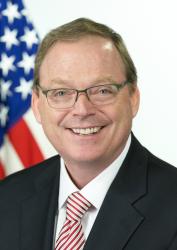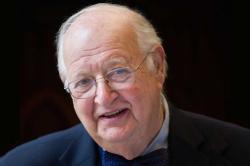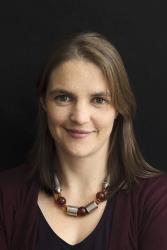

2:00 pm EDT - 3:45 pm EDT
Past Event
After COVID-19 peaks, the U.S. will face another extraordinary challenge: reopening the economy. “Decisions about how and when to reopen the economy are tough ones,” said Glenn Hutchins, co-chair of the Brookings Board of Trustees, in introducing a May 12 virtual event hosted by the Hutchins Center on Fiscal and Monetary Policy. “We want to get out of the shutdown mode as quickly as possible, but we don’t want to endanger the lives of our colleagues, friends, and neighbors—and in particular, we don’t want to start a second phase of the pandemic.”
An economic shock of this size brings many uncertainties, said Kevin Hassett, White House senior economic advisor and former chair of the Council of Economic Advisers. He emphasized one: When states reopen, will their economies restart?
“We’re taking an active role in informing people, both about the science and about what’s going on on the ground,” he said, “and I think with that, then people in the towns and states are going to make the judgments about exactly what they can do.”
Hassett described the U.S. as in “the build–a–bridge–to–the–other–side phase,” assisting households and businesses while the shutdown persists. As economic activity revives, focus will turn to longer-run policies to nurture the post-COVID recovery—but, he said, “if you were to go into … call it maybe the final phase … this week, then you might be putting the cart ahead of the horse.”
James Stock, a Harvard economist, nonresident senior fellow at Brookings, and author of a Hutchins Center background paper assessing strategies for reopening the economy, emphasized that the purpose of reopening is to get people back to work. To do so while managing the risks to public health means selective relaxation of restrictions.
Weighing activities’ economic benefits against their risks will be important, Stock explained. He suggested that low-value, high-risk activities like professional sporting events might be suspended indefinitely. For many low-contact industries, Stock argued that there isn’t much benefit in waiting to reopen—and that includes brick-and-mortar shopping with protections to thwart the spread of the virus. He noted, though, that consumers and workers need to be confident that measures will work.
An optimistic outcome is possible, but the conditions for optimism are dark, Stock warned. “If people go back to even a near normal social life, the virus can rekindle, and deaths will rise, no matter what protections there are at the workplace … so it’s super important in my view that we prioritize the economic activities and keep a laser-like focus on what’s going to allow people to get back to work while restraining non-work social activities. It doesn’t sound like a lot of fun, but I think it’s better than the alternative.”
Sir Angus Deaton, a Nobel laureate and senior scholar at Princeton University’s Woodrow Wilson School of Public and International Affairs, highlighted inequalities of the pandemic, including the much-publicized racial and ethnic disparities.
Many Americans with college degrees can go on working at home, but those without college degrees are likely to face dire alternatives: “The essential workers risk their lives, and the nonessential workers risk their livelihoods.” The pandemic will heighten the earnings differential between these groups, as well as the difference in mortality rates that Deaton and co-author Anne Case highlighted in a new book, “Deaths of Despair.”
The political inequalities of the pandemic will soon shift, Deaton predicted. Because the virus has caused more deaths in blue states, he said, “A red state governor is losing his business in exchange for blue state lives, so for him, opening up is a no-brainer, which is sort of why it’s happening.” But that balance will likely change: “[I]t’s clear that as deaths move into red states, there will be less political difficulty about helping states in trouble, and there will be a greater consensus for a smart opening.”
Ross Hammond, senior fellow and director of the Center on Social Dynamics and Policy at Brookings, said models from epidemiology are useful both in forecasting and in evaluating different policy interventions. “For models to be useful and to do more good than harm, it’s essential that they are built and applied appropriately,” Hammond said. Models need to capture three features of the coronavirus: heterogeneity, spatial structure, and uncertainty.
Caroline Buckee, associate professor of epidemiology at Harvard University’s T. H. Chan School of Public Health, emphasized differences in how the virus is playing out across the country. “It’s not one big epidemic; it’s multiple small epidemics,” she said. “We have hyperlocal epidemics that we think result from the distribution of populations of varying socioeconomic status who can or cannot afford to do physical distancing interventions.” Buckee called for hyperlocal decisions that account for inequalities and the relationships between neighborhoods.
Buckee also outlined epidemiological considerations for reopening: How will we monitor the epidemic while reopening? What will the decision rule be for adapting policies? Because the epidemic is hyperlocal and staggered, what spatial scale is appropriate for policymaking? What are we willing to tolerate?
This webinar was a prelude to a forthcoming Brookings project on “Reopening America and the World.”




Moderator

Panelist



Chris Miller
April 23, 2024

Wendy Edelberg, Noadia Steinmetz-Silber
April 23, 2024

Lauren Bauer, Bradley Hardy, Olivia Howard
April 17, 2024